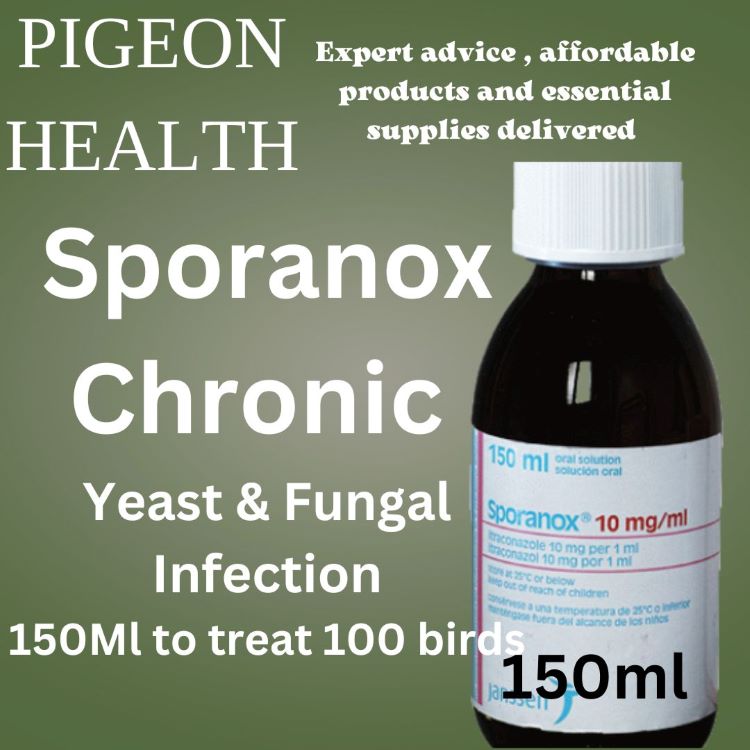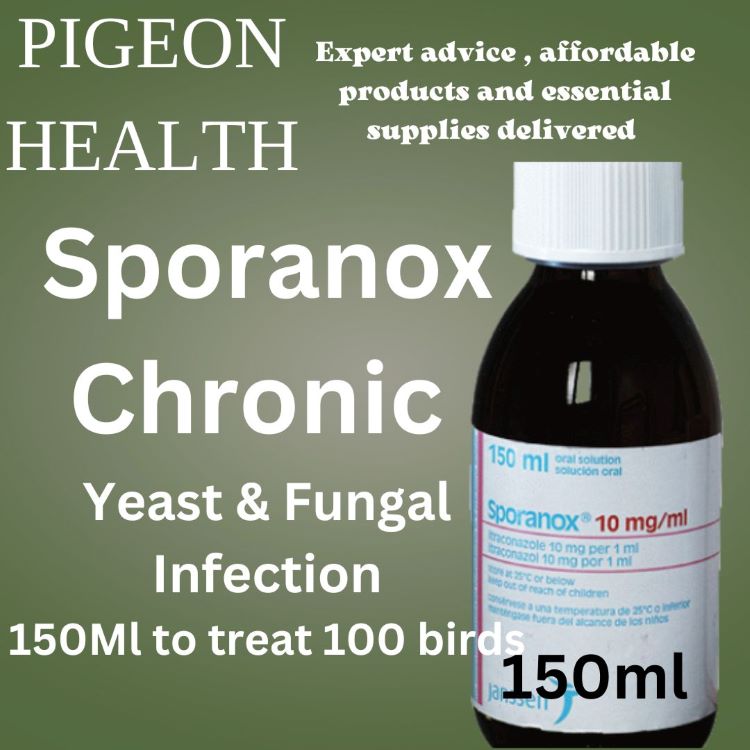My Store
Fungal and Yeast antifungal antibiotic
Fungal and Yeast antifungal antibiotic
Couldn't load pickup availability
Fungal Diseases in Pet Birds: Early Recognition and Management
Fungi are common in the environment and are often normal inhabitants of birds' skin, gastrointestinal tracts, and mucous membranes. Healthy birds typically resist infection thanks to a robust immune system, but compromised birds can develop serious fungal infections. Early recognition of these infections is crucial for effective management, which involves appropriate antifungal treatment and ongoing assessment of the bird’s response to therapy. This article provides an overview of several fungal diseases affecting companion birds.
Aspergillosis
Aspergillosis, primarily caused by Aspergillus fumigatus, affects a variety of avian species, both wild and captive. Though considered infectious, these fungi are non-contagious and widespread in the environment. Other pathogenic species include A. flavus, A. niger, A. nidulans, and A. terreus.
All birds are susceptible, particularly young or immunocompromised individuals. Risk factors include overcrowding, poor sanitation, inadequate ventilation, malnutrition (like hypovitaminosis A), exposure to respiratory toxins, and high-stress environments.
Commonly affected species include raptors (like goshawks and red-tailed hawks), galliformes (pheasants and quail), and certain companion birds, especially blue-fronted Amazon parrots, African grey parrots, and mynah birds.
Aspergillosis can be acute or chronic. Acute infections arise from high spore exposure over a short time, leading to rapid lung colonization and severe disease. Chronic infections may develop due to immunosuppression or concurrent diseases, often manifesting in granulomatous lesions in areas with high oxygen levels, such as air sacs.
Clinical signs vary but may include changes in vocalization, difficulty breathing, weakness, lethargy, weight loss, and, in severe cases, sudden death. Diagnosis involves a thorough history, physical examination, and various laboratory tests, including radiography and fungal cultures.
Treatment often requires antifungal medications such as itraconazole, clotrimazole, terbinafine, enilconazole, or amphotericin B, typically with long-term therapy and close monitoring. Prognosis is often poor, especially for severe cases.
Candidiasis
Candidiasis, caused by Candida albicans, is another opportunistic yeast infection commonly found in birds' gastrointestinal tracts. It frequently affects juvenile birds, especially after antibiotic treatment or during illness.
The disease, also known as thrush, occurs when Candida overgrows, leading to symptoms like difficulty swallowing, halitosis, and the formation of pseudomembranes in the oropharynx. Infections may also affect the crop, proventriculus, and even the respiratory system.
Diagnosis is based on the identification of Candida in tissue samples. Treatment involves addressing predisposing factors and administering antifungal agents such as nystatin, fluconazole, or itraconazole.
Cryptococcosis
Caused by Cryptococcus neoformans, this disease is often associated with contaminated environments, particularly those with pigeon feces. It can affect various avian species and is zoonotic, meaning it can be transmitted to humans.
Clinical signs are often nonspecific and may include weakness, lethargy, respiratory distress, and neurological symptoms. Diagnosing cryptococcosis requires identifying the yeast through cytology or culture.
Treatment options include amphotericin B, itraconazole, and ketoconazole, though the prognosis is generally poor.
Rhodotoruliasis
Rhodotorula mucilaginosa is a yeast that can infect the skin, particularly in raptors. It manifests as greasy, crusty lesions, often in the axillary areas. Diagnosis is made through physical examination and cytology.
Treatment involves removing affected tissue and applying topical antifungal creams, along with antibiotics to prevent secondary infections.
Mucormycosis
Mucormycosis, caused by fungi such as Mucor, Absidia, and Rhizopus, can affect multiple organ systems. Clinical signs may vary widely, and diagnosis before death is uncommon. Effective treatment remains elusive.
Share


